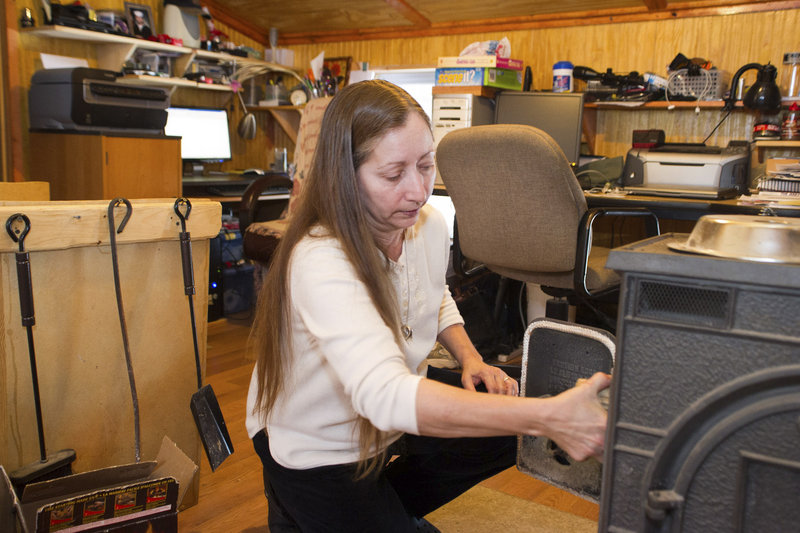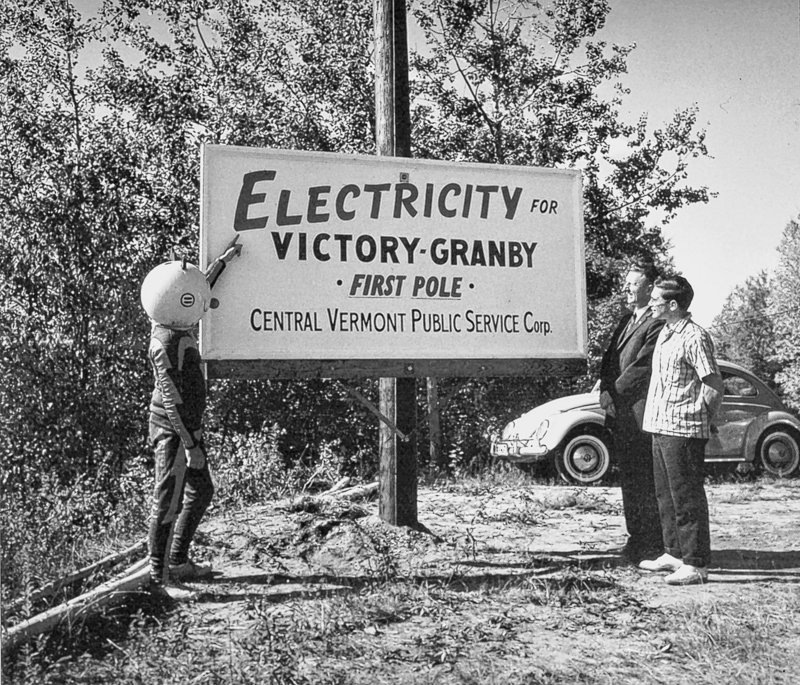EAST BURKE, Vt. – Up in rural northern Vermont, it took until the 1960s to run power lines to some towns — decades after the rest of America got turned on.
These days, it’s the digital revolution that remains but a rumor in much of rural America.
Dial-up user Valerie Houde knows this as well as anybody. After moving here four years ago, the 51-year-old mother of four took a correspondence course for medical transcription, hoping to work from home. She plunked down $800, took the course, then found out the software wasn’t compatible with dial-up Internet, the only kind available to her.
Selling items on eBay, watching videos, playing games online? Forget it. The connection from her home computer is so slow, her online life is one of delays, degraded quality and “buffering” warning messages. So she waits until the day a provider extends broadband to her house.
“I feel like these companies, they don’t care about these little pockets of places,” she said one night recently, showing a visitor her computer’s slow Internet service. “And I know we’re not the only ones.”
For Houde and millions of other Americans laboring under slow or no Internet service, help is on the way.
Bolstered by billions in federal stimulus money, an effort to expand broadband Internet access to rural areas is under way, an ambitious 21st-century infrastructure project with parallels to the New Deal electrification of the nation’s hinterlands in the 1930s and 1940s.
President Obama emphasized the importance of Internet access in his State of the Union address last week.
“To attract new businesses to our shores, we need the fastest, most reliable ways to move people, goods, and information — from high-speed rail to high-speed Internet,” Obama said.
In the Depression, it was power to the people — for farm equipment and living-room lamps, cow-milking machines and kitchen appliances. Now, it’s online access — to YouTube and digital downloads, to videoconferencing and Facebook, to eBay and Twitter.
“Rural areas all across the country are wrestling with this, somewhat desperately,” said Paul Costello, executive director of the Vermont Council on Rural Development. “Young people who grow up with the media will not live where they can’t be connected to digital culture. So most rural communities have been behind the eight ball.”
Seventy years ago, President Franklin Delano Roosevelt realized that if private industry wouldn’t run power lines out to the farthest reaches of rural areas, it would take government money to help make it happen. In 1935, the Rural Electrification Administration was established to deliver electricity to the Tennessee Valley and beyond.
Now, money from the American Recovery and Reinvestment Act is doing the same with broadband, which is typically defined as DSL (digital subscriber line), cable modem, fiber optic or fixed wireless.
The stimulus act set aside $7.2 billion for expansion of broadband access, believing it will spur economic growth, boost educational opportunities and create jobs. The money has jump-started what were existing efforts by states and telecom providers to bridge the digital divide of rural America.
In its national broadband plan issued last year, the Federal Communications Commission pinpointed schools’ use of online resources as one of the key targets of the stimulus-funded expansion efforts.
“We sorely need fiber-optic in our community,” said Robert Brinkley, director of technology for the North Country Supervisory Union school district in Vermont.
The 13 schools in his district share a T-1 line whose bandwidth is so small that whenever a video field trip is planned for a class, all the other users on the system have to stop using e-mail first.
“The picture doesn’t just get poor, we lose the connection. Whether it’s NASA or the Cleveland Museum of Art, we’ll lose the connection or it’ll drop completely,” Brinkley said.
A Commerce Department report last year showed that 65.9 percent of urban households subscribed to broadband in 2009, compared with 51 percent of rural households. There are several reasons for the rural shortfall, but lack of availability is the most often cited.
Consumers in rural states have been left behind, either because their homes are too far from one another, mountains make construction expensive or providers have lacked the capital to justify the investment:
• In Kansas, Rural Telephone Service Co., Inc. got $100 million in stimulus loans and grants to extend broadband into unserved areas.
• In Colorado, mountains and vast stretches between farms and ranches on the plains have made it difficult for companies to justify spending millions of dollars to lay fiber optic cable to connect far-flung residents.
There, a public-private partnership won $100 million in stimulus money to try to expand high-speed Internet access to all Colorado school districts and to libraries and key institutions across the state. Some of the money will go to laying fiber and erecting new microwave towers to deliver broadband — at least — into areas that need them.
• In Texas, where 96 percent of households have broadband, $8 million in stimulus money is funding a five-year effort that includes mapping, data collection and technical assistance in hopes of reaching the 285,550 now-unserved households. Dave Osborn, CEO of Valley Telephone Cooperative Inc., said his company serves an area of roughly 1,700 square miles in south Texas with a population of 30,000. Stimulus money is key, he says.
Obama said the broadband goals far exceed convenience.
“This isn’t just about faster Internet or fewer dropped calls,” the president said.
“It’s about connecting every part of America to the digital age. It’s about a rural community in Iowa or Alabama where farmers and small business owners will be able to sell their products all over the world. It’s about a firefighter who can download the design of a burning building onto a hand-held device; a student who can take classes with a digital textbook; or a patient who can have face-to-face video chats with her doctor.”
Meanwhile, Valerie Houde waits.
“I know there are a lot of people out there, like us, who would greatly benefit from having broadband, and with the money the state got for expanding service, it seems something should change, finally, as long as the money goes where it’s supposed to and not into politicians’ and corporate executives’ pockets,” she said.
Copy the Story Link
Send questions/comments to the editors.




Success. Please wait for the page to reload. If the page does not reload within 5 seconds, please refresh the page.
Enter your email and password to access comments.
Hi, to comment on stories you must . This profile is in addition to your subscription and website login.
Already have a commenting profile? .
Invalid username/password.
Please check your email to confirm and complete your registration.
Only subscribers are eligible to post comments. Please subscribe or login first for digital access. Here’s why.
Use the form below to reset your password. When you've submitted your account email, we will send an email with a reset code.